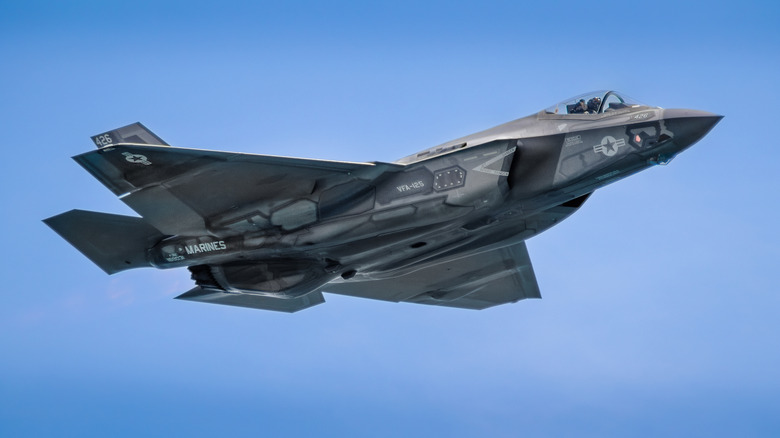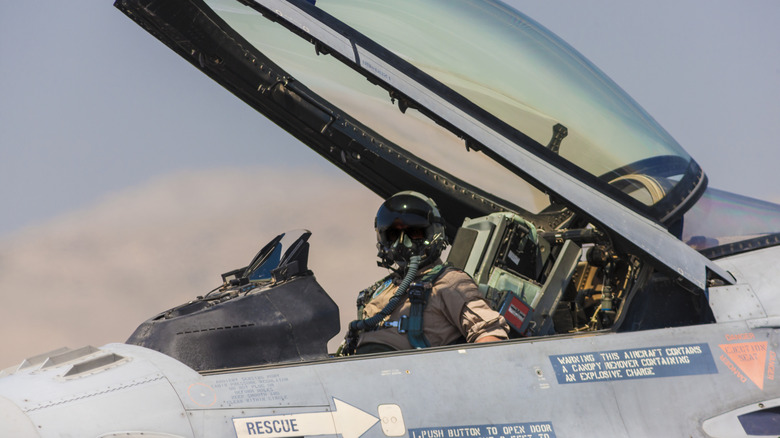Fighter Pilots Run Their A/C On Full Blast When Flying In Alaskan Winters: Here's Why
When it's cold in your home, you turn on the heater, and when you're sweltering in the heat, you turn on your smart A/C. This is very simple, understandable logic, but only if you're sitting at home. If you're inside something a little more elaborate, such as a military fighter jet, you might find yourself running the A/C full throttle, even when you're flying at ridiculous elevations through the coldest, most frigid Alaskan winters. The reason for this has less to do with the jet itself, and more to do with the pounds of sweaty gear a pilot is typically wearing.
No matter how cold it is outside the jet itself, the inside of a jet's cockpit can be absolutely sweltering due to a combination of the sun beating down directly overhead and the thick, heavy gear and clothing the pilot is wearing. While a jet's Environmental Control System (ECS) could provide heating if the pilot so desired, it is technically safer for the pilot to bundle up on the off chance they need to make a quick exit from the vehicle.
The A/C is kept on to compensate for the pilot's sweltering gear
Fighter jet pilots operating in particularly cold areas like the Alaskan wilds are encouraged to dress themselves in a manner that will keep them warm, even though the inside of the cockpit is temperature controlled. The reason for this is that, in the event the pilot needs to eject from the jet, it could be a while before an ally comes to pick them up. This means they could be stuck in those frigid temperatures without any heating to keep them safe. When you're stuck in the coldest places on Earth, you won't last long. To compensate, pilots wear multiple layers of warm, thick clothing, in addition to their regular pilot gear, to keep themselves safely insulated.
Of course, all that insulation gets quite stuffy while they're still inside the cockpit. This is the reason a pilot will have their A/C on full blast, to equalize the temperature in the cockpit between their sweaty gear and the cold from the A/C. That said, this isn't a perfect solution. If it's too cold outside, around minus 20 degrees Fahrenheit, it would be too dangerous to eject even with all that insulation, so pilots typically don't fly in those kinds of temperatures. Additionally, if the A/C runs at full blast for the entire duration of a flight, small icicles can start to build up within the cockpit's vents. These icicles can be jostled loose by elaborate flight maneuvers, which could send them directly into the pilot's body.

